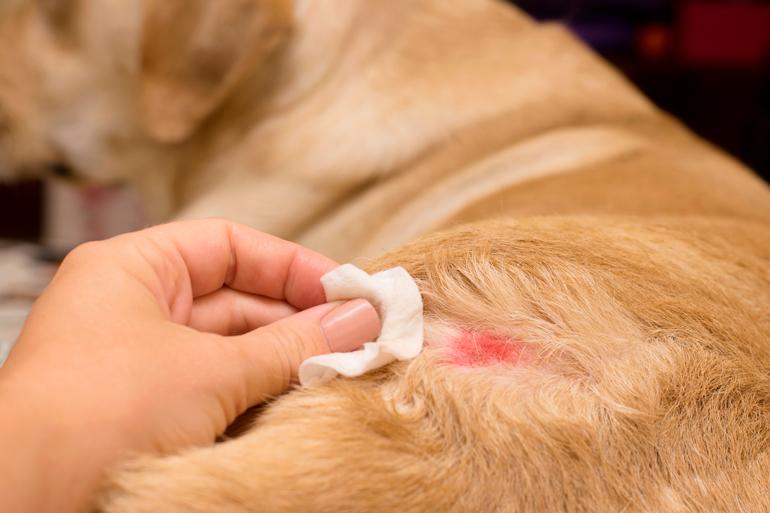Stains on the skin, when to start worrying?
There are mainly two types of spots: vascular and pigmented.
Vascular spots are reddish spots and are associated with vascularization problems of the skin. "We can talk about hemangiomas, which are vascular dilations and that appear, mainly, in the first years of life and that in up to 80% of cases disappear on their own with the passage of time," emphasizes Dr. Juliana Machada , collaborating dermatologist at the Institute of Comprehensive Dermatology.
Ruby dots are also very common, which are benign, rounded red lesions that do not become malignant and that, on occasion, have a family character. "They frequently appear in adults and are located on the back, neck and face in the form of red spots of 2 to 6 millimeters," emphasizes the doctor.
On the other hand, the well-known spider veins (telangiectasias) are quite common vascular spots in people with lighter skin and are characterized by small dilations of blood vessels that especially affect the areas with more exposure to sunlight, such as the face and neckline.
''Very infrequent are, for their part, the so-called ''port wine'' stains due to their intense color. These do not disappear and represent an aesthetic problem if they are on the face or neck'', explains Machada.
Pigmented spots take on different shades of brown, because they are produced by overstimulation of melanin (pigment that gives color to skin and hair). Among them we find moles (nevus), freckles, solar lentigines (which appear due to overexposure to the sun) and melasma, which appears on the face and is related to female hormones.
CAN STAINS BE PREVENTED?

According to the expert, all those that have something to do with an abuse of sun exposure can be prevented to some extent. This is the case of solar lentigines (they appear with age in the most exposed areas, such as the face, neckline and hands), moles (some of which are the result of sunburn that may have occurred decades ago) and spots ruby (which, in addition to age, appear more frequently in skin that has been in the sun for a long time).
''For its part, freckles and melasma can be attenuated with effective sun protection from childhood. Freckles occur especially on light skin and red hair, while melasma appears to a large extent during pregnancy, when there are strong hormonal changes or when taking photosensitive medications,'' she says.
TREATMENTS
Did you know, that if you measure real estate, gold and the DOW against one another, you can determine which one is… https://t.co/LJLzwOEvoQ
— Chris Wilhite Thu May 13 00:35:00 +0000 2021
Each type of stain has a different treatment to eliminate it or, attenuate it as much as possible. "For vascular stains, the most indicated treatments are PDL (pulsed dye laser), IPL (intense pulsed light) and KTP, which act on ruby points, telangiectasias (regardless of where they appear, and the hemangiomas, whose use can be used from when the child is small so that they do not develop and can affect some organs such as the respiratory tract or the eyes (the area of the nose and around the eyes are the most frequent places of appearance )'', clarifies the dermatologist.
As for pigmented spots, combinations of treatments may be required. Photoprotection is the basic pillar of treatment. In addition to the treatment prescribed by the doctor (creams with retinoic acid, hydroquinone, vitamin C, glycolic acid, tranexamic acid, among other depigmenting agents), medical devices can be used, such as the use of Q-Switch or fractional lasers, which act breaking down the pigment, so that it is eliminated naturally by the skin, among other treatments such as microdermabrasion, chemical peels, mesotherapy with specific active ingredients to lighten the skin or needeling. All these treatments must follow a protocol with the guidance of the dermatologist, since misuse can aggravate the spots or appear new ones.
WHAT INDICATES THAT A STAIN IS SOMETHING MORE SERIOUS?
In the vast majority of cases, details the specialist, ''pigmented spots have a benign origin, so they could only concern us on an aesthetic level. However, if we see that a spot or mole grows very quickly, changes color or becomes rough, we should go to the dermatologist to study it since it could be skin cancer. For this, it is essential to carry out periodic self-examinations and apply the ABCDE rule''.
The ABCDE rule can help patients identify possible skin cancer. The letters mean the following: A, asymmetry; B, irregular borders; C, color changes; D, diameter (greater than 0.6 centimeters): and E, evolution (if abrupt changes occur in a mole or spot).
Because you are the most important... Estetic.es
We recommend you:
How do skin spots form?
So you can prevent and combat skin blemishes









1772